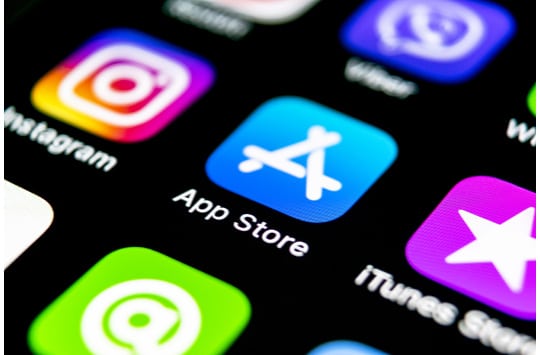
Source: Bigstock
Cancellation is a problem that plagues all subscription businesses, with two possible solutions: Gain new customers to replace the lost ones or regain the ones who have left. This column offers ideas and data to help execute the second strategy.
It makes sense to target lapsed customers, even over new customers, because these are people who have already demonstrated a willingness to pay for your service. They know what you offer, and they have shown a need for it by subscribing in the past. That puts them light years ahead of the cold-contact leads one might use to find new customers.
Let’s start by identifying lapsed customers, distinguishing them from inactive ones. Consider this illustrative graphic – the slices of the pie will vary in size for each subscription service:

(Source: Listrak)
The value of this graphic is to divide former subscribers into two sets: Those who are entirely cut off, and those who remain engaged in some way, such as by subscribing to a newsletter or by not unsubscribing from email messages or by continuing to visit a website or by buying products. These lapsed members retain a lot of value. In fact, one researcher set out to quantify the exact value of these lapsed members.
Mailchimp analyzed 6.6 billion email transmissions and came to an interesting conclusion. Lapsed subscribers – that is, those who have not unsubscribed, but who otherwise are not active, are worth 32% of an active subscriber. The terminology used by Mailchimp is a little confusing, referring to “active” subscribers, “inactive” subscribers, and “non-subscribers.” This research uses “inactive” to mean “lapsed,” but with that caveat, take a look at the results:

(Source: Mailchimp)
The conclusion of the research is that lapsed subscribers still are more likely to offer value, at greater frequency, and with better subscription longevity, compared with non-subscribers. The provider of the subscription just needs to find effective ways to engage this lapsed audience.
CONDUCT TESTING
A key first step is to learn about the lapsed customer’s demographic. This information is essential because it forms the basis of tailored messaging used to bring lapsed subscribers back. For example, game maker Blizzard recently polled gamers who had unsubscribed from a new service, even asking for Skype chats with them, in order to learn why they had left.
Also this year, the American Art Therapy Association used A/B testing to figure out if lapsed members were more likely to respond to instant gratification (a $10 Starbucks gift card) or long-term benefits (a three-month extension on their annual membership)? The long-term benefit was more than twice as likely to bring a member back to the association.
Community Brands polled lapsed members to determine motives for unsubscribing in greater detail. For this organization’s lapsed members, the results looked like this:

(Source: ASAE)
The next step is to pick the approach that best answers lapsed subscriber’s needs. Here are some options.
OFFER INCENTIVES
One obvious way to target these former customers is to “make them an offer they cannot refuse” — that is, an incentive. If you offer them discounted prices, expanded services, or some form of more of what they want, that may well inspire them to return.
Researchers at Georgia State University partnered with a telecom company to test different offers intended to bring former customers back into the fold. They divided lapsed customers into two groups — those who left over service, and those who left over price. They offered discounts to some, extra free service to others, and a bundle of both to still others. As reported in the Harvard Business Review,
- Recent technology, particularly more-sophisticated customer databases, allows companies to draw on information about how people used their service the first time around to craft more-successful win-back offers and to identify and go after the most profitable defectors.
The different trials offered success rates from 41% to 47%:

(Source: Harvard Business Review)
It is interesting to note that the strategy with the highest success rate also offered the lowest ROI. That may not matter, however, when the goal is to increase market share.
A pure example of this incentive strategy is the recent drive by Spotify to woo back former premium subscribers with an offer of $9.99 for three months, which is what the company usually charges for one month.
DEMONSTRATE VALUE AND ENGAGEMENT
The problem with incentives, however, is that they may send the wrong message. If a subscription service has a strong brand loyalty component, then offering to buy back members may backfire. As an industry expert tells online magazine Associations Now:
- Win-back campaigns are not easy, and you have to tread lightly when you’re aiming to reengage former members. “Obviously a discount or promotions help, but that’s not everything,” says Dan Ratner, membership and business development strategist at the Next Steps LLC. “Associations need to evaluate strategies and, most importantly, demonstrate a strong value to win back former members.”
There is a portion of every lapsed customer demographic that simply forgot to resubscribe. The right appeal to these former customers can bring them right back. First priority in this process is to analyze the resubscription system and make sure it is as easy and user-friendly as possible.
Another set of lapsed subscribers will be moved by appeals to the existing relationship. Consider a successful program launched by the Audubon Society, reported at Cause & Effect. The bird-lover’s association sorted their lapsed list by the number of years the former subscribers had been active. After identifying those who had been active for 20+ and 10+ years, the association sent hand-written and personal notes to these former longtime-supporters. They were thanked for their years of support and offered free subscriptions, as well as membership cards:
- Something unexpected happened. These lapsed members started sending in their member dues at $45, and a number of them sent larger donations, often at $100 and more. Last year, Audubon decided to extend the program to 10+ year members. Did it make a difference? What are the numbers, you are probably asking? Since the program started, Audubon has mailed out about 300 handwritten note cards to lapsed members – around 15 a month. Each note is carefully crafted, so the task takes donor relations manager Sharon Cresci almost a full day each month. Is it worth it? 50% renewed their membership.
On the other hand, let me offer an aside on what NOT to do: Don’t email lapsed subscribers to inform them that you are restarting their subscriptions and will be charging their credit cards unless they let you know otherwise. I’m looking at you, here, MoviePass! Yes, incredibly enough, the troubled movie subscription company is monetizing its lapsed customers by resubscribing them, unless they opt out. One can only wonder at the calculation that weighed this strategy against the inevitable bad press and legal action and still decided it was a worthwhile idea.
Insider Take
Once upon a time, every lapsed subscriber was a new subscriber. Some of those who cancel will not come back, of course, but many former customers will give their subscription another chance – if asked in the right way, and offered the right reason to do so.







